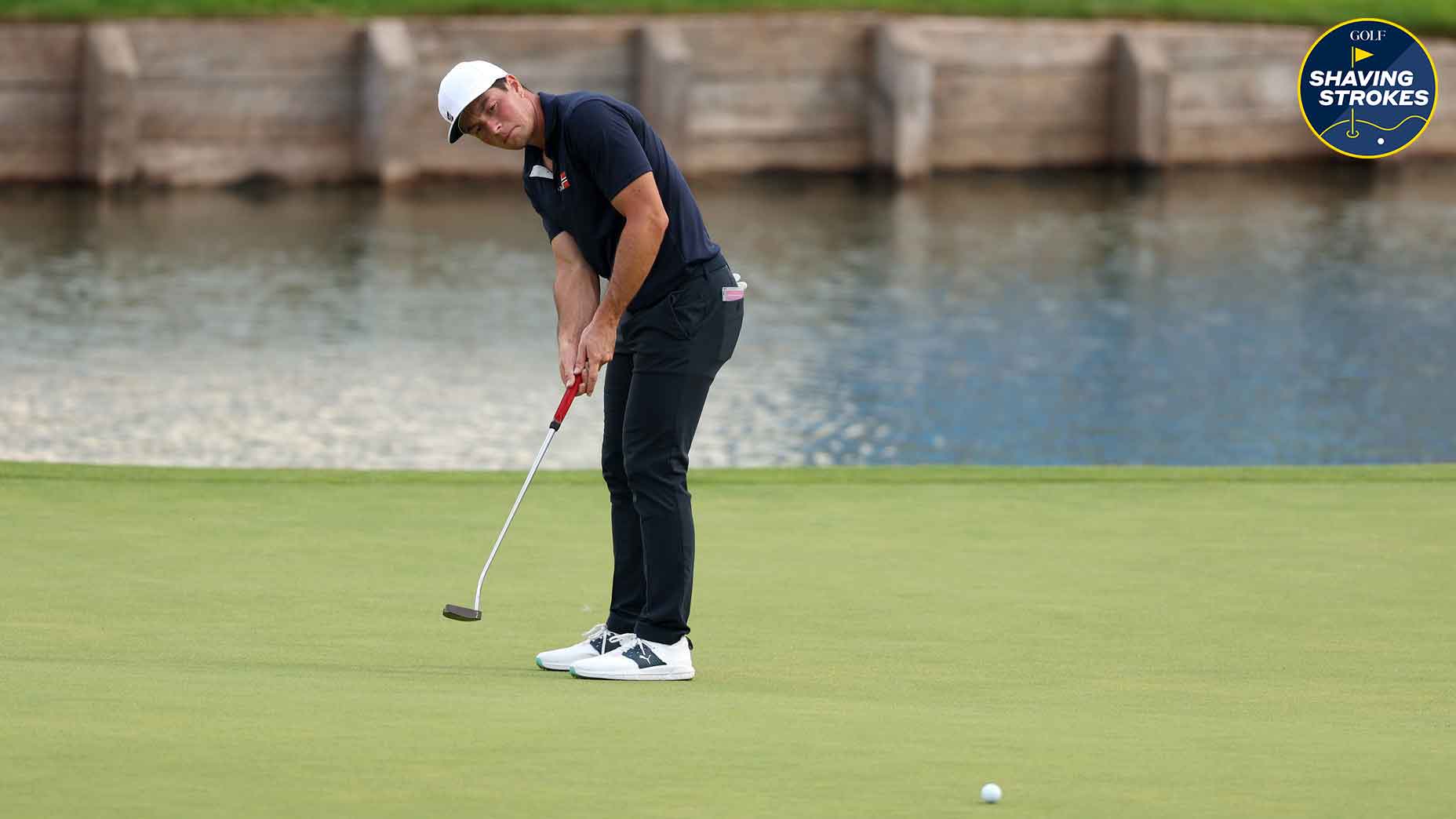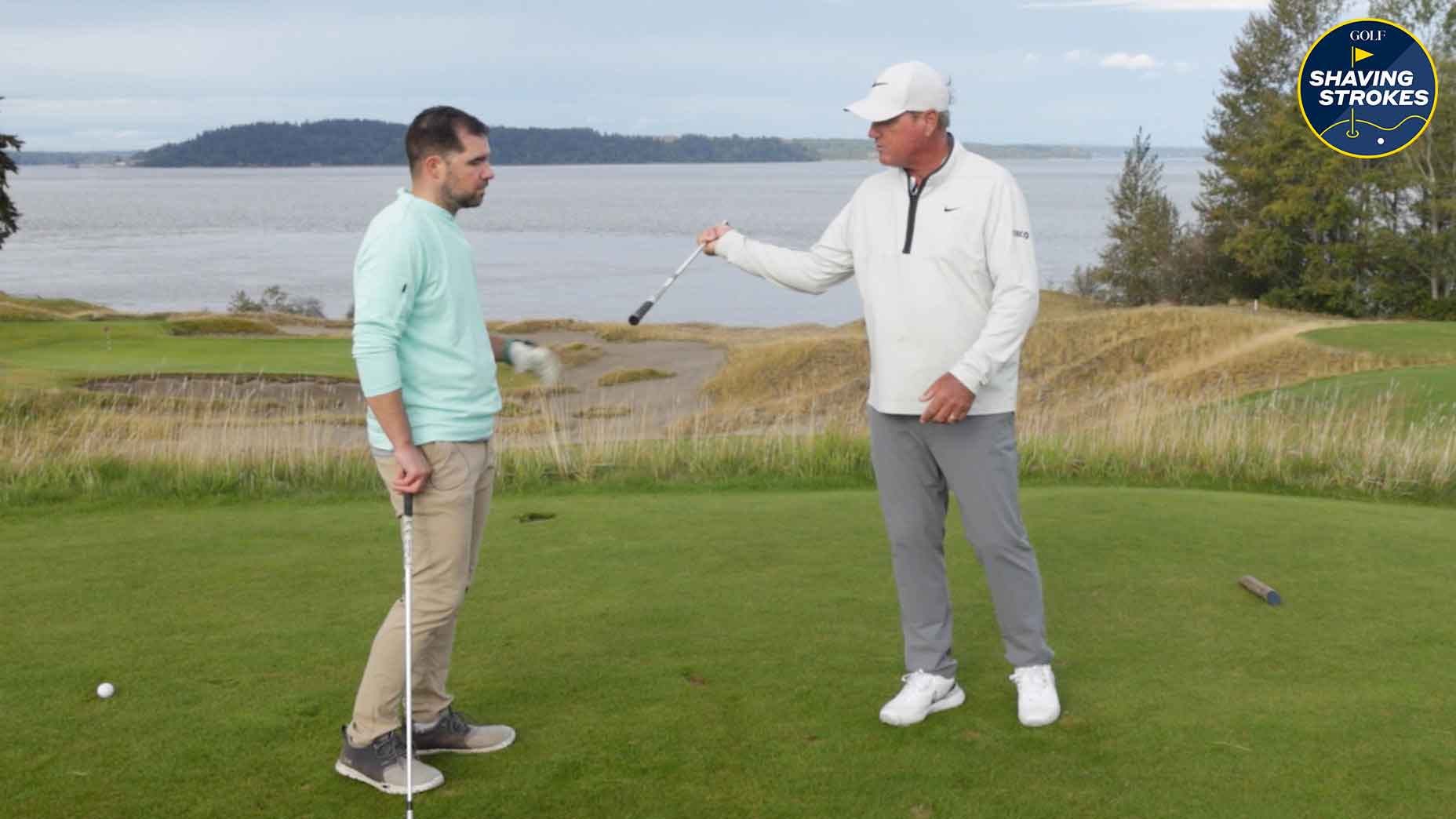5 easy ways to build better habits and control your golf performance
- Share on Facebook
- Share on Twitter
- Share by Email

If you're struggling to find consistency with your golf performance, use these five strategies from GOLF Top 100 Teacher Allen Terrell.
Getty Images
One common theme I’ve heard from nearly every GOLF Top 100 Teacher is this: Build better habits and your golf performance will improve.
Seems easy enough in principle, but for many amateur players, it’s tough to actually put into practice. That’s because you’ve established routines and patterns that come natural to you, and, for better or worse, that’s what you do when playing a round.
For example, I’m notorious for showing up late to the golf course (my buddies can frustratingly attest). Not only does this cause unnecessary anxiety as I speed to make my tee time, but it doesn’t allow much time (or any) to warm up. This means I typically go into a round rushed, tight, and with little knowledge of how my swing feels that day.
Naturally, it takes me a few holes to find my groove. By then, it usually means I’m scrambling to undo the damage I’ve already done to my scorecard. But arriving late to the course is just one of my bad habits — trust me, there are plenty more.
To get to where I want to as a player, it means creating a different plan, getting comfortable with change and consistently sticking to the routine. In doing so, the game will become simpler — and more fun!
Follow these strategies to control your golf performance
To help improve your process and take more control of your golf performance, GOLF Top 100 Teacher Allen Terrell is here to help.
Below, Terrell shares his five strategies that every golfer can use in order to improve their game. They’re simple, subtle changes that don’t require much effort — so give them a try and see your scores dip!
1. Establish pre-swing checkpoints
It’s impossible to change your swing overnight, but your setup can! So develop pre-swing checkpoints for key elements like ball position, side bend and posture. I suggest every golfer invest just 60 seconds of their time to run through these checks on the range, which can save you hours of frustration during your time on the golf course.
2. Familiarize yourself with front and back green yardages
For many high-handicappers, simply understanding the yardages to the front and back of the green can significantly improve their game. This means adjusting your club selection on approach shots based on these yardages.
I suggest choosing a club that covers the front of the green when the flag is front or middle, and one that won’t overshoot the green for a flag in the back. As your skills progress, consider factoring in yardages to navigate slopes. Remember, the yardage to the flag is rarely the ideal number for club selection.
3. Evaluate your putting performance
Whether it’s after practice or following a round, always assess your putting performance across four skills: green-reading, speed control, aim, and starting the ball on the correct line. By identifying where you struggle, you’ll help your instructor develop a plan for you.
To devise an effective practice plan, focus on specific areas. If you have limited time for putting practice, prioritize speed control and green-reading, as they’re by far the most important of the four skills.
4. Optimize your practice sessions
During swing practice, concentrate on making deliberate changes rather than mindlessly hitting balls. This means having a focused approach, working on things like your tempo, transition and overall ball-striking ability.
Skill practice sessions offer room for experimentation, encompassing tasks like shaping the ball, altering the ball flight and training on uneven lies. I always recommend ending your range session with skill practice rather than swing practice.
5. Dial in your mindset for instruction
As you approach a golf lesson, your mindset will determine the overall value of each session. Your goal is to learn the cause and effect of your golf swing, so go in with intent, absorbing the info from your coach.
Your instructor’s role is to prioritize the most important task for your improvement, then provide you with a structured plan to gradually make progress. Don’t hesitate to ask questions — especially using the word “Why?” A proficient instructor will value your commitment to taking charge of owning your swing.

Rukket Sports XL Tri-Turf Mat
$99.99
View Product
Latest In Instruction

Golf.com Photographer

Nick Dimengo
Golf.com Editor









